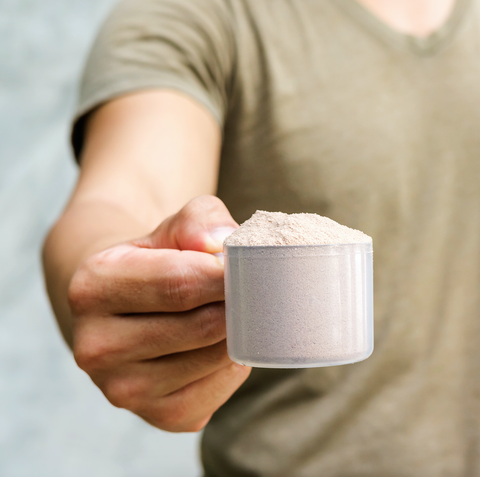
Protein is important. In fact, it’s vital for building the body you want. Protein helps decrease hunger, builds and maintains muscle, fortifies your bones, improves brain function, aids your immune system, and can even pick up the kids from soccer practice if you’re strapped for time.
We digested the past 25 years of nutrition knowledge, talked to the smartest experts about the latest science, and sorted through a lot of nutrition B.S.—all to provide you with the most up-to-date information about protein right now.
How Much Protein Do You Need?
Consume 1.2 to 1.6 grams of protein for every kilogram of your target bodyweight.
A 180-pound guy who wants to maintain his current weight would need 100 to 130 grams, or six palm-sized portions of protein-rich foods, every day. That’s about 30 grams at each meal and an additional 10 to 20 grams in two snacks. Chicken breast is great, but so are chicken thighs, tofu, salmon, pork, shellfish, whitefish, lamb, tempeh, and much more.
Within the larger picture of your daily diet, that means you’ll want to consume 30 percent of your daily 2,600 calories from protein.
What About Protein Powder?

Getty Images
It’s a great way to consume more of the nutrient—as long as you’re looking for the right things on the label What makes a perfect protein powder?
1. It’s minimally sweetened: Look for five grams of sugar or less per serving, and avoid fake sugars.
2. It’s made from whey isolates: They’re high-quality protein that have amino acids you need, particularly leucine.
3. It has 150 or fewer calories for every 25 grams of protein: Otherwise it’s a high-calorie milkshake.
4. It’s “NSF Certified for Sport” or “Informed-Choice Certified”: So it contains what it says it contains.
Our Top Picks:

Getty Images
Duck Breast (21 grams protein in 3 ounces)
Skinless duck breast is about as lean as chicken breast, and a portion still comes in at under 200 calories. The taste is deeply hearty, savory, and luscious.
Chickpeas (15 grams in 1 cup)
They form the base of hummus, and they make a great addition to soups, chilis, salads, and curries. Bonus: Chickpeas are loaded with gut-filling fiber. One cup has a whopping 13 grams.
Scallops (17 grams in 3 ounces)
Plump, meaty, and satisfying, these mollusks taste best seared over medium-high heat on each side till crispy and then plunked into butternut-squash soup or atop risotto.
Edamame (9 grams in 1/2 cup)
They’re technically soybeans, and beyond being a great go-to sushi-bar appetizer, they’re delicious thrown into salads, noodle dishes, and stir-fry. They’re a solid source of fiber, too.
Fresh Mozzarella (18 grams in 3 ounces)
This cheese tends to have fewer calories than aged cheeses, which gives you permission to stack a caprese salad (but maybe not eat an entire ball).
Mussels (18 grams in 3 ounces)
Dump a bag of scrubbed mussels into a pot with some beer and butter. Simmer until they open. Serve with a hunk of crusty bread for dipping.
Tempeh (17 grams in 1/2 cup)
You’ll usually find this fermented soybean product (tastes savory, not stinky) in the fridge section of a good grocery. Crumble and stir-fry it.
Source: Read Full Article